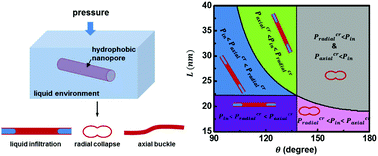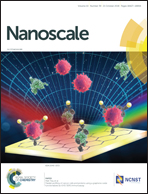Compressing liquid nanofoam systems: liquid infiltration or nanopore deformation?†
Abstract
Understanding the invasion of a liquid into porous structures is the foundation of the characterization of the porosity-related properties of materials and is also of fundamental importance in the design of porous solid–liquid enabled energy protection systems, yet whether solid pores deform has been unclear so far. Here, we present a competition mechanism between liquid infiltration and cell wall buckling deformation by investigating a liquid nanofoam (LN) system subjected to quasi-static compression. The critical buckling stress of the cell wall and the infiltration pressure of liquid invasion into nanopores are studied and correlated through numerical simulation and experimental validation to reveal the quantitative relationship between nanopore deformation and liquid invasion. The analysis shows that liquid infiltration occurs, independent of the axial buckling stress of the cell wall; in contrast, the nanopore collapses radially when the radial collapse pressure is lower than the pressure of liquid infiltration, preventing the liquid invasion. Comprehensive molecular dynamics (MD) simulations are performed and demonstrate the deformation behavior of nanopores and cell wall–liquid interactions in a broad range. Pressure-induced compression experiments on a silica-based LN system are carried out and validate these theoretical and MD results.



 Please wait while we load your content...
Please wait while we load your content...
